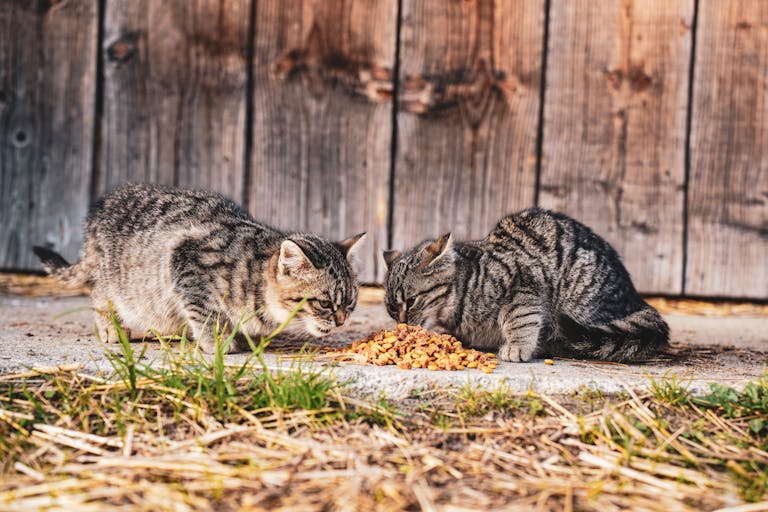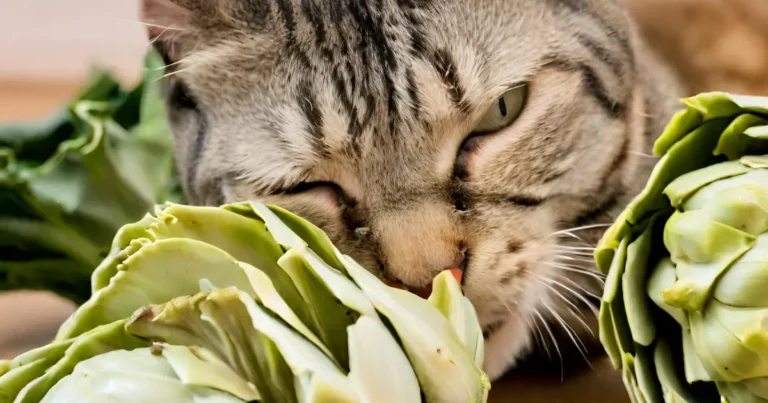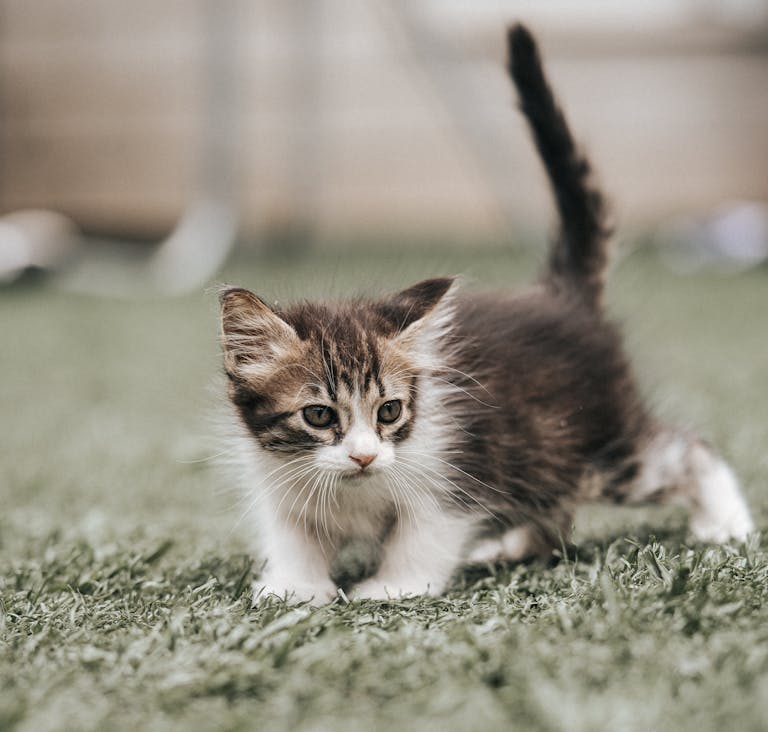Catnip 101— Safe Use, Benefits, and Tips for Your Cat!
Ever wonder why cats are so obsessed with catnip? Cats love catnip as a treat, but it’s crucial to understand what it is and how to use catnip safely. Whether you’re an experienced or novice cat owner, you may have inquiries concerning this intriguing herb and how to use catnip safely. Everything you need to know about catnip—including how to use it safely—will be covered in this article.
In this article, we’ll begin by explaining what catnip is and why it’s so appealing to cats. We’ll also explore what catnip does to cats, how to use catnip safely in different forms, whether it can calm them down, and if it ever expires.
Additionally, we’ll cover different ways to offer catnip to your cat, such as in bags, as tea, or in toys. Finally, we’ll discuss whether catnip is safe for cats and if kittens can use it.
What Is Catnip?
Catnip (Nepeta cataria) is a mint-family herb. It is widespread in Europe and Asia, but has also expanded over North America. The active chemical in catnip that affects cats is called nepetalactone, and it is present in the plant’s leaves and stems.
See also Understanding Cat Pregnancy
When cats come into touch with catnip, whether through smelling, licking, or eating, they can exhibit a wide range of behaviors, from lively and frenetic to peaceful and relaxed. Understanding how to use catnip safely begins with knowing what catnip is and its effects on cats.
Why Do Cats Love Catnip?
Cats love catnip because of its euphoric effects, which are caused by the compound nepetalactone. When a cat smells catnip, nepetalactone binds to receptors in the cat’s nose, stimulating sensory neurons that affect the cat’s behavior. This reaction is similar to how certain drugs affect the human brain, though it’s completely safe and non-addictive for cats.
Not all cats react to catnip, as sensitivity is hereditary. It’s estimated that about 50-70% of cats have a response to catnip, and kittens under three months old usually don’t react to it at all. The effects of catnip usually last about 10 to 15 minutes, after which the cat will become temporarily immune to the effects for a period.
After this, the cat can be re-exposed to catnip and may experience the same behaviors. Learning why cats love catnip can help you determine how to use catnip safely in your cat’s routine.
What Does Catnip Do to Cats?
The way that cats engage with catnip can result in a range of behaviors when they are around it. Some cats can get overly energetic and start pacing the house or playing rough with toys. Other cats might loudly meow, purr, or roll around.
On the other hand, some cats have been known to go extremely silent, exhibiting signs of a trance. These are transient effects that wear off after ten to fifteen minutes on average.
The cat normally loses interest in catnip after this point and doesn’t react to it for a while. The different ways cats react to catnip emphasize the importance of knowing how to use catnip safely.
Does Catnip Calm Cats?
While catnip is commonly linked with lively and energetic behavior, knowing how to use catnip safely can also help in calming certain cats. When swallowed rather than sniffed, catnip can function as a mild sedative, allowing the cat to relax.
This relaxing effect can be beneficial for anxious or disturbed cats, but it’s important to remember that not all cats will react the same way. Each cat’s reaction to catnip is unique, so keep a watch on your cat’s behavior and use catnip wisely.
Step-by-Step Guide — How to Use Catnip Safely?

Catnip is a popular and enjoyable treat for many cats, but it’s important to use it correctly to ensure your feline friend stays safe and happy. Here’s a step-by-step guide on how to use catnip safely.
Step 1: Choose the Right Form of Catnip
Catnip is available in various forms, each with different uses:
- Dried Catnip: The most common form, it can be sprinkled on the floor, scratching posts, or toys.
- Catnip Spray: A convenient option for spraying on toys or bedding.
- Catnip Toys: Toys filled with or coated in catnip, encouraging play.
- Fresh Catnip: A live plant that cats can chew on or roll around in.
- Catnip Tea: Can be made by steeping dried catnip in water, though not all cats may enjoy drinking it.
Choose the form that best suits your cat’s preferences and your intended use.
Step 2: Introduce Catnip Gradually
When introducing catnip to your cat for the first time, start with a small amount to see how they react. Sprinkle a little dried catnip on the floor or offer a catnip toy. Watch your cat’s behavior closely. Some cats may become playful, while others might become calm or show no reaction at all. If your cat doesn’t respond, try again in a few days or try a different form of catnip.
Step 3: Monitor Your Cat’s Reaction
Pay attention to how your cat reacts to catnip. Monitoring your cat’s reaction is essential when considering how to use catnip safely. Common behaviors include rolling, purring, playing with toys, or becoming more vocal.
Some cats may become more energetic, while others might get sleepy. The effects typically last 10-15 minutes. If your cat becomes overly aggressive or shows signs of distress, remove the catnip and give your cat time to settle down.
Step 4: Use Catnip in Moderation
While catnip is safe for cats, it’s important to use it in moderation. Using moderation is key in learning how to use catnip safely. Overexposure can lead to desensitization, making the catnip less effective over time. Limit catnip sessions to a few times a week to keep your cat’s interest and ensure the effects remain enjoyable.
Step 5: Store Catnip Properly
To keep catnip fresh and potent, store it in an airtight container, away from heat and light. This will help preserve the essential oils that make catnip effective. Properly stored, dried catnip can last for up to a year. If your cat seems less interested in the catnip over time, it may be losing its potency, and you should consider replacing it.
See also Can Your Cat Catch Lice from You?
Step 6: Use Catnip for Enrichment and Training
Catnip can be a great tool for enriching your cat’s environment and encouraging positive behaviors. Use it to:
- Encourage Play: Sprinkle catnip on toys or scratching posts to make them more appealing.
- Promote Exercise: Use catnip to get a sedentary cat moving and playing.
- Reduce Stress: Offer catnip before potentially stressful events, like vet visits, to help calm your cat.
- Assist with Training: Use catnip as a reward for good behavior or to attract your cat to a specific area.
Step 7: Be Cautious with Kittens
Catnip is usually not responded to by kittens until they are three to six months old. When giving catnip to a young cat, begin with a modest amount and carefully evaluate their behavior. There is nothing wrong with offering catnip to kittens, however they may not be interested until they are older.
Step 8: Refresh Catnip Toys Regularly
Keep in mind that the catnip within catnip toys will eventually lose its strength if you use them. You can give the toy a fresh coat of catnip or give it a spritz of catnip to keep it looking enticing. Make sure the toy is still safe for your cat to play with by checking its condition on a regular basis.
Step 9: Know When to Avoid Catnip
Although most cats can safely handle catnip, there are a few situations in which it might be preferable to avoid using it:
- Aggressive Behavior: It’s advisable to keep your cat away from catnip in the future if it exhibits aggressive behavior after doing so.
- Health Concerns: Before administering catnip to a cat that has a certain medical problem, consult your veterinarian.
- Pregnancy: Because catnip might induce uterine contractions, it is generally advised against administering herb to pregnant cats.
Recognizing when to avoid catnip is a crucial part of learning how to use catnip safely. Catnip may provide your cat with hours of entertainment and enrichment. You can make sure that your cat receives the benefits of catnip without experiencing any harmful side effects by being aware of what it is, selecting the correct kind, and using it sparingly. Keep an eye on your cat’s behavior at all times, keep catnip appropriately, and use it as a training and enrichment tool.
Catnip is a great supplement to any feline care regimen, whether you’re using it to promote play, ease tension, or just brighten your cat’s day.
Can Catnip Expire?

Yes, catnip can expire, though it doesn’t spoil in the way that food does. Over time, the essential oils in catnip that contain nepetalactone can degrade, causing the catnip to lose its potency.
To keep catnip fresh and effective, it should be stored in an airtight container, away from light and heat. Dried catnip typically lasts about six months to a year, but this can vary depending on storage conditions. If your cat no longer seems interested in the catnip, it may be time to replace it with a fresher batch.
| Catnip Storage Tips | Effectiveness |
|---|---|
| Airtight container | Preserves potency for 6-12 months |
| Cool, dark place | Prevents degradation of oils |
| Fresh catnip | Stronger and more effective |
Can Catnip Calm a Cat Down?
Catnip has the potential to calm some cats, particularly when they consume it. Ingesting catnip can produce a sedative effect, which may help reduce anxiety or stress in cats.
This calming effect is especially useful during situations that might otherwise be stressful for a cat, such as a vet visit or a long car ride. However, it’s essential to remember that not all cats will react the same way, and some may become more playful or energetic instead.
Bag Catnip
Among the most popular and practical kinds of catnip that can be found is in bags. In order to preserve its freshness, it typically comes in a resealable bag. If you want to encourage your cat to play or unwind, you can sprinkle catnip directly on the floor, put it inside a toy, or rub it on a scratching post. Because it is adaptable and can be used in numerous ways, bagged catnip is a popular option among cat owners.
Catnip Tea for Cats
Catnip tea is another option for giving catnip to your feline buddy, albeit it is less popular than other techniques. To create catnip tea, steep dried catnip in boiling water, allow it to cool, and serve it to your cat in a shallow bowl.
Some cats enjoy drinking catnip tea, which has a relaxing effect comparable to catnip in other forms. However, not all cats will be interested in drinking the tea, so it’s worth experimenting to see how your cat reacts.
Catnip Toy
Catnip toys are toys that have been infused or stuffed with catnip. These toys are intended to stimulate your cat’s natural hunting instincts, offering both cerebral and physical activity. The catnip within the toy entices your cat to play, pounce, and bat it about. The aroma of catnip may fade with time, but you may renew the toy by rubbing it with fresh catnip or spraying it with catnip spray.
Is Catnip Bad for Cats?
Catnip is typically regarded as harmless for cats and non-addictive. However, some cats may get extremely excited or violent when introduced to catnip, particularly if given too much at once. It’s critical to observe your cat’s reaction and use catnip in moderation. If your cat displays signs of anxiety or overstimulation, reduce or eliminate their exposure to catnip.
See also How To Stop A Cat From Suckling
Can Kittens Have Catnip?
Kittens can be given catnip, but they usually don’t respond to it until they are about three to six months old. The sensitivity to catnip is inherited, and not all cats will react to it, regardless of age. It’s safe to introduce catnip to kittens, but you may find that they simply aren’t interested in it until they are older. When introducing catnip to a kitten, start with a small amount to see how they react.

FAQs About How To Use Catnip
How often can I give my cat catnip?
You can offer catnip to your cat a few times a week, but it’s best to avoid giving it every day to prevent desensitization.
Can all cats have catnip?
Not all cats are sensitive to catnip. About 50-70% of cats will respond, while others may show no interest.
Are there any health benefits of catnip for cats?
Catnip can improve general well-being by promoting physical activity, lowering stress levels, and stimulating the mind.
Can catnip make my cat aggressive?
While rare, some cats may become overstimulated or aggressive after exposure to catnip. Monitor your cat’s behavior and adjust usage accordingly.
Is catnip safe for kittens?
Kittens can safely have catnip, but they usually don’t react to it until they are around three to six months old.
Can catnip help with anxiety in cats?
Yes, catnip is helpful for lowering anxiety since it can have a relaxing impact on certain cats, especially when consumed.
What is the best way to store catnip?
To keep catnip potent and fresh, store it in an airtight container away from heat and light.
Closing Thoughts
Catnip can be a fun and enriching addition to your cat’s life when you know how to use catnip safely and appropriately. Whether you’re offering it in a bag, as a tea, or in a toy, it’s important to observe how your cat reacts and to use catnip in moderation.
See also How to Pamper Your Cat?
While catnip is generally safe for cats, not all felines respond to it the same way, and some may need a different approach. By understanding what catnip is and how to use catnip safely, you can use this herb to enhance your cat’s well-being and happiness.







